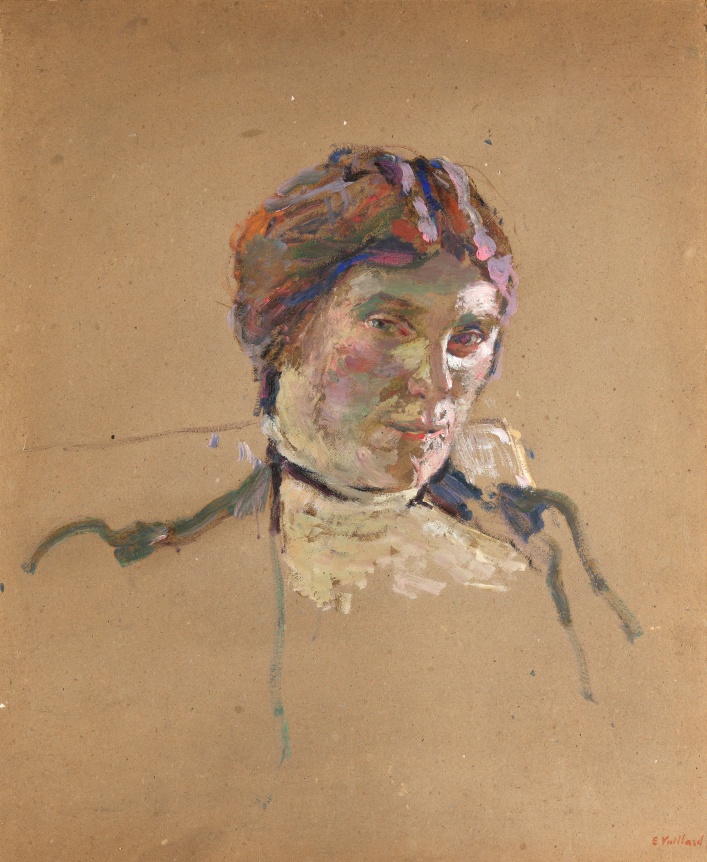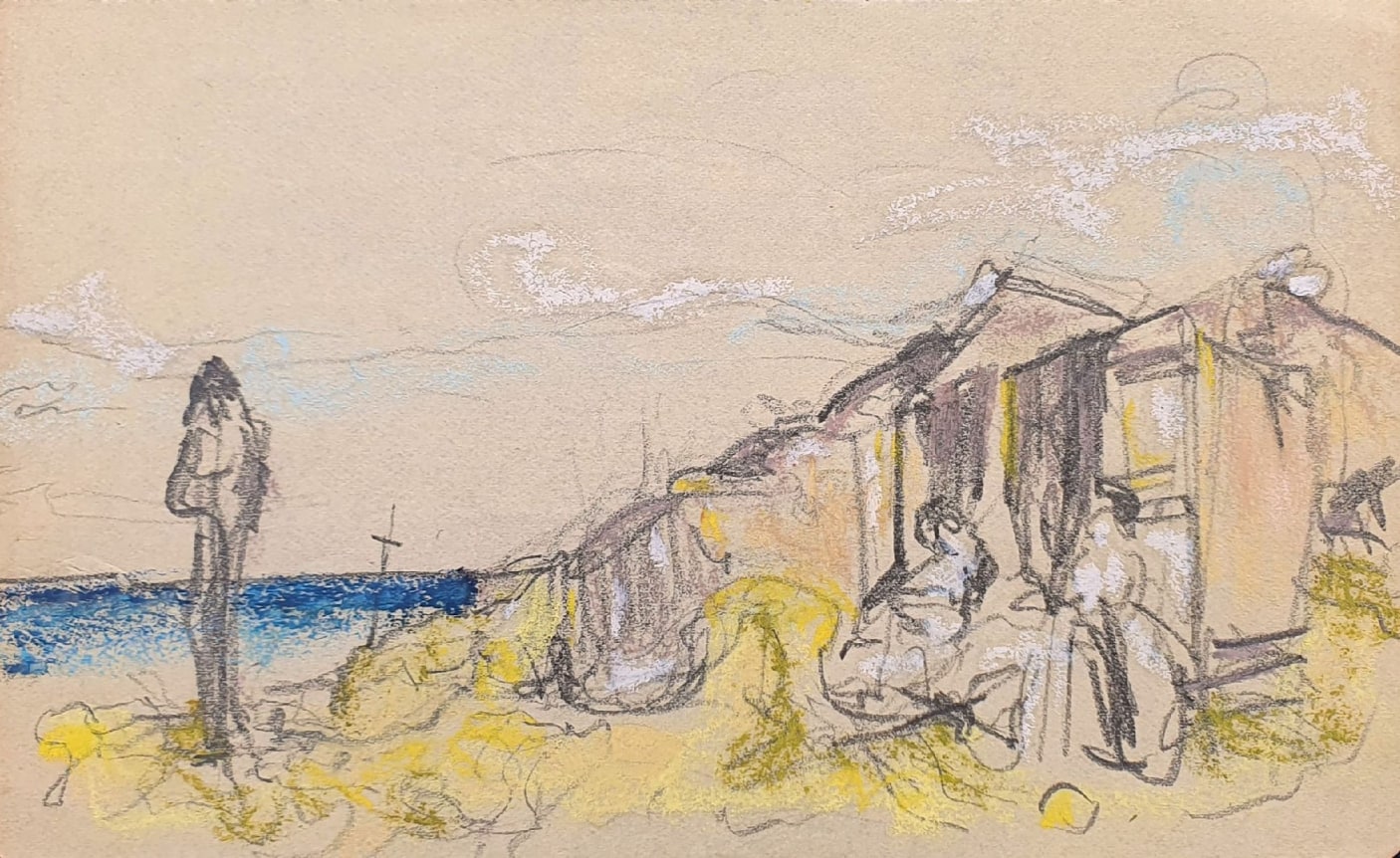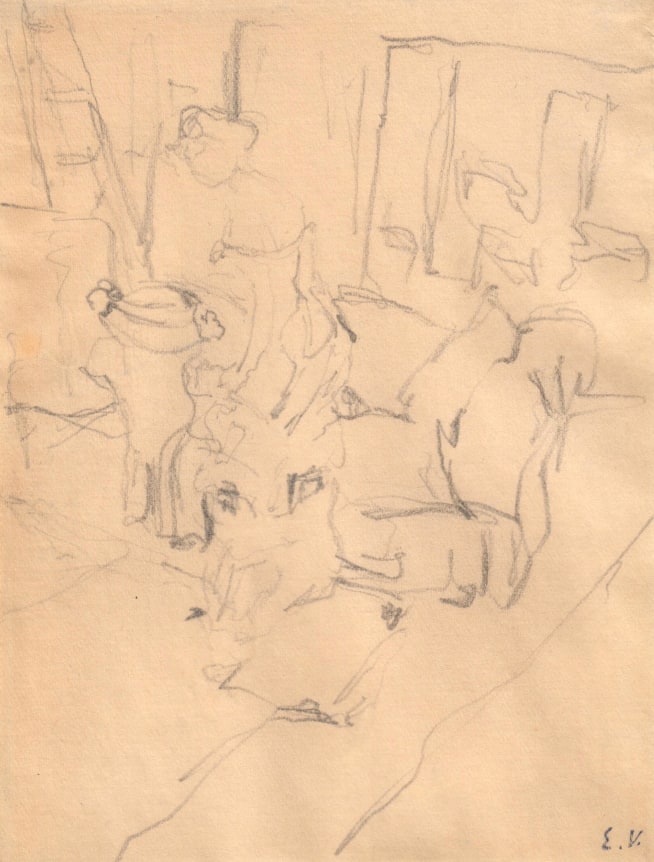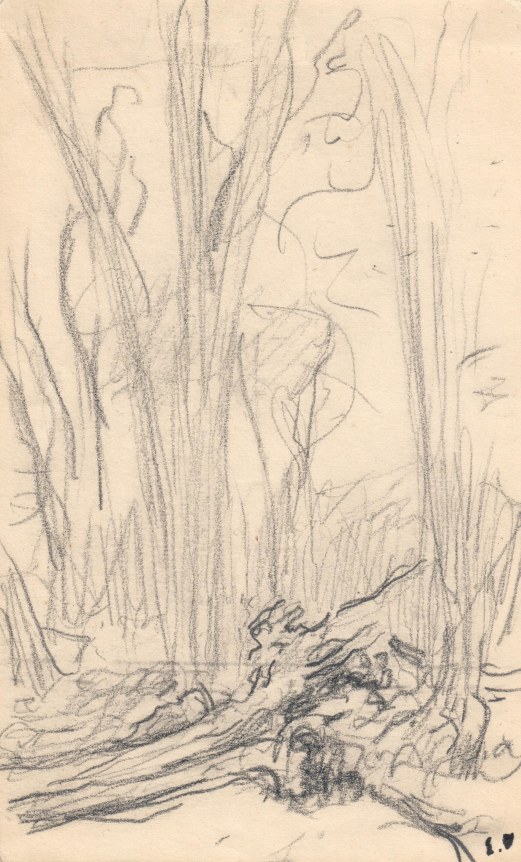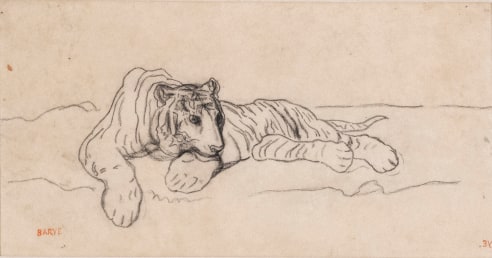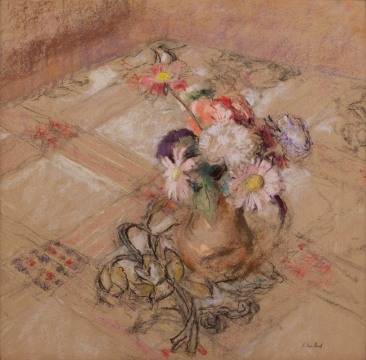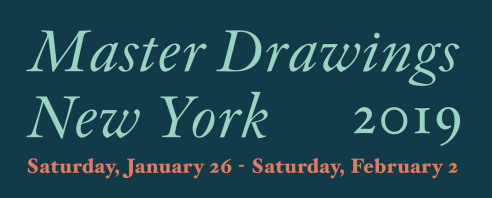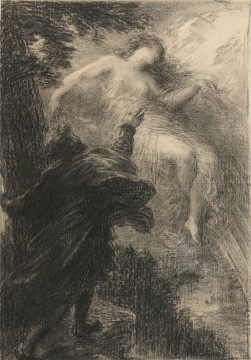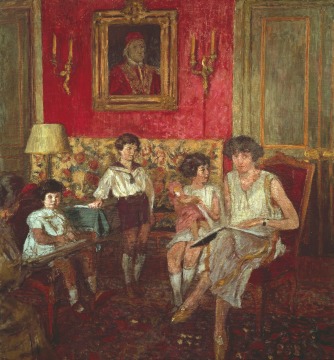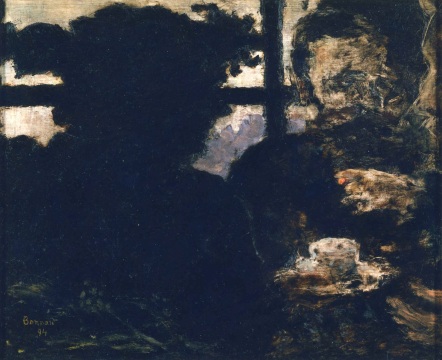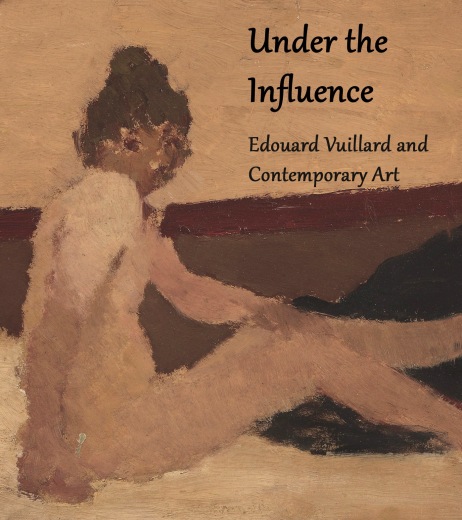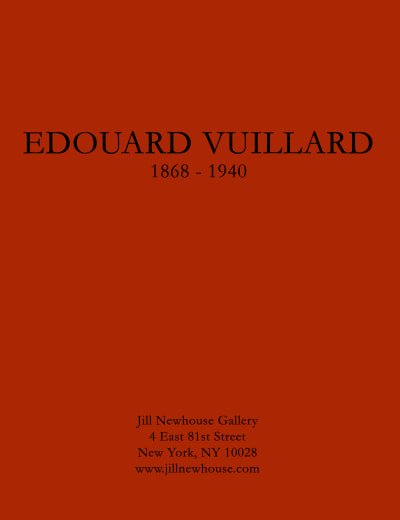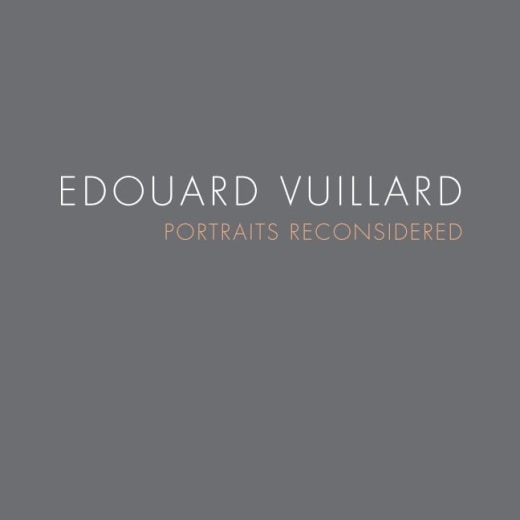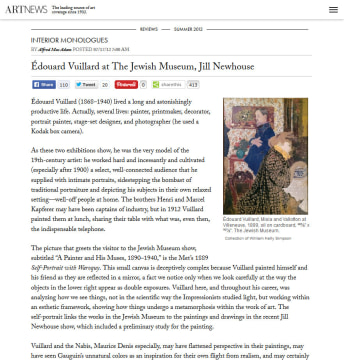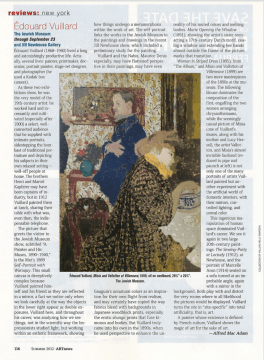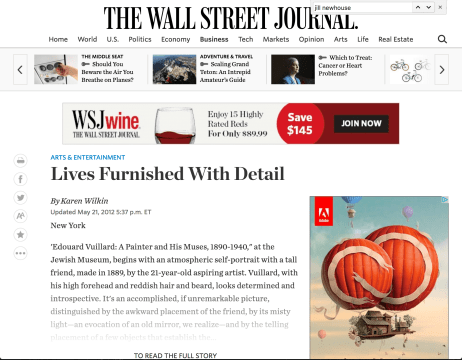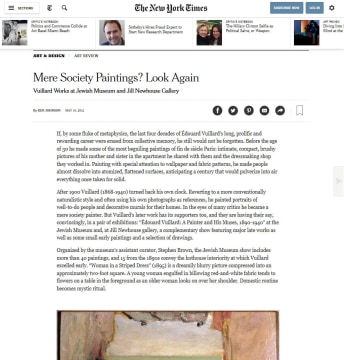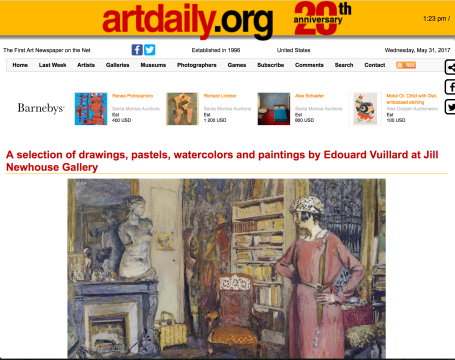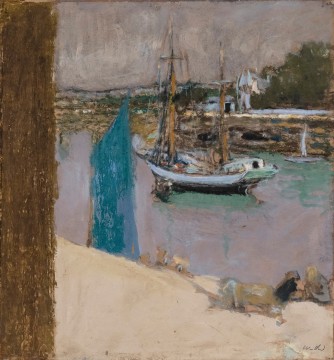
Édouard Vuillard (1868-1940) was born in Cuiseaux (Saone-et-Loire) and moved to Paris with his family ten years later. After his father's death in 1884, Vuillard received a scholarship to continue his education at the Lycée Condorcet. It was here that he met Ker Xavier Roussel, also a future painter as well as Vuillard's future brother in law, Maurice Denis, musician Pierre Hermant, writer Pierre Véber and actor and director Lugné-Poë. In 1890, along with Bonnard and Denis, Vuillard joined the Nabis, a group of art students inspired by the synthetism of Gauguin with a goal to revitalize painting. He contributed to their exhibitions at the Gallery of Le Barc de Boutteville, and later shared a studio with them. In the early 1890s he worked for the Théâtre de l'Oeuvre of Lugné-Poë designing sets and programs. By the end of the century, however, the Nabis had disbanded and Vuillard returned to a more naturalistic style. He executed portraits and large decorative schemes, including stage scenery, from 1892 to 1937. Landscapes of the beaches and countryside of Normandy along with street scenes of his native Paris were widely admired during his career, and Vuillard enjoyed a steady flow of commissions. He died in La Baule in 1940.
Vuillard is best known for his paintings of interiors - intimate spaces inhabited by his family and patrons. His iconic style can be characterized by the use of vibrant colors, thick outlines, flattened and distorted perspectives and shapes that communicate his feelings and ideas about the subjects. He was frequently commissioned to paint portraits, in which he portrayed his sitters in domestic settings characteristic of them, thereby extending the psychological depth of the portrait. His involvement and interest in the theater was undoubtedly an important stimulus for his predilection for a particular composition style, as well as muted and mysterious light effects. His style evolved from avoidance of depth, special ambiguity, and a dense overall effect during the Nabis period to a more conventional use of perspective after the turn of the century. It was then that he became more focused on luminosity and favored the mediums of pastels and distemper to create his works.


